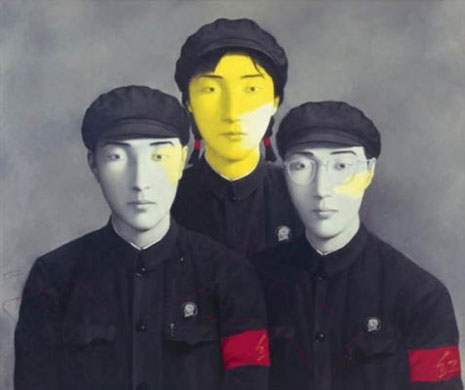Today Art Museum and Contemporary Art in China
"Throughout the 1980's, Chinese avant-garde artists and art critics envisioned themselves as participants in a delayed modernization movement, which aimed to re-introduce humanism and the idea of social progress into the nation's political consciousness"
Wu Hung on Contemporary Art, Making History
"Contemporary art" is the art that emerged in China in the 1980's, and has been constantly evolving. The name itself came when "modern art" took a major turn in the 1990's, and artists sought another name to describe their humor and irony. Similar artistic movements have taken place in many countries of the world -- Iran, Mexico, Algeria. These combine the local character of the nation with many of the themes of global art. Many of these "works" are not even paintings or ink and brush works, but often they are photographs, installations, or videos that catch the imagination of the world. This new art form is less popular in China itself, but given the world's attention that situation may soon change.
Today Art Museum offers an interesting window on Chinese and international creations. The board declares that the simple goal is to become the best contemporary art museum in the world. It all began in 2002 when Zhang Baoquan, a property developer, the head of the Antaeus Company and a great lover of art, founded the Today Art Gallery. This place is dedicated to contemporary art and experienced a turning point since 2004 with the appointment of Zhang Zikang, a renowned publisher, to its direction. But the real turning point in the history of the museum was marked by its transformation into a non-governmental and non-profit museum in July 2006, becoming the first in China.
Located in eastern Beijing, Today Art Museum has a bookstore, a restaurant and souvenir shop. With an exhibition area of 5,500 square meters on two buildings, the museum offers a space to the extent of its ambition: to promote contemporary Chinese art in the world.
A Cynical and Humorous Look at Chinese Society
What makes the art of this school different from others that appeared in China is that it takes a fresh look at much of what appears in Chinese newspapers and television. As its founder says, "This school of art takes a humorous and cynical look at life in contemporary China, but its appeal is worldwide. Instead of the heroic paintings of the 1950's and the 1960's, we are greeted by a school of art that has more in common with the New York Pop Art than it does with the art of a decade ago.
Three artists featured in the museum
The artists represent the spirit of this movement:
|
|
|
[See photo one, work by yin minjun] |
Yue Minjun is a leading figure in what became known as Cynical Realism. The famous male figure in his art is probably the most well-known and representative icon of this early 1990's art movement. Cynical Realism is an artistic trend that evolved in the 1990's, at the closing of the "China Avant-Garde" exhibition at the China National Gallery in Beijing. These events symbolize the climax of the artistic aspirations built up during the 1980's, creating a void Yue Minjun and others filled with a new message filled with irony and indifference to the big forces that the individual is subjected to. Yue Minjun was one of the first artists to translate this new social temperament onto the canvas. The idealism of the 1980's gave room for a more somber and realistic understanding of the role of the avant-garde art. In this sense, Yue Minjun's art reflects the new artistic tendencies of contemporary Chinese art in the 1990's. Yue Minjuns' art with its humor, cynicism, emphasis of strong vivid colors and centrality of the individual displays all the common characteristics of the movement of Cynical Realism.
 0
0 








Go to Forum >>0 Comments